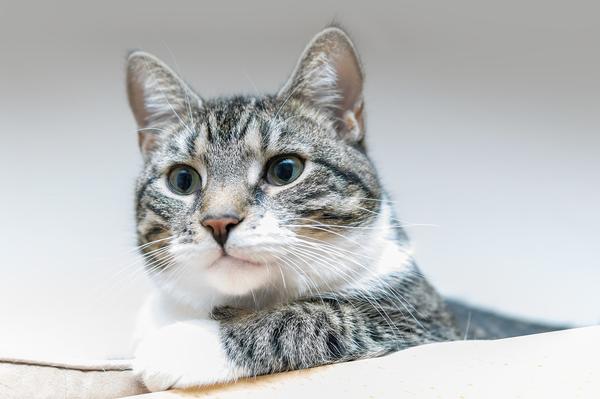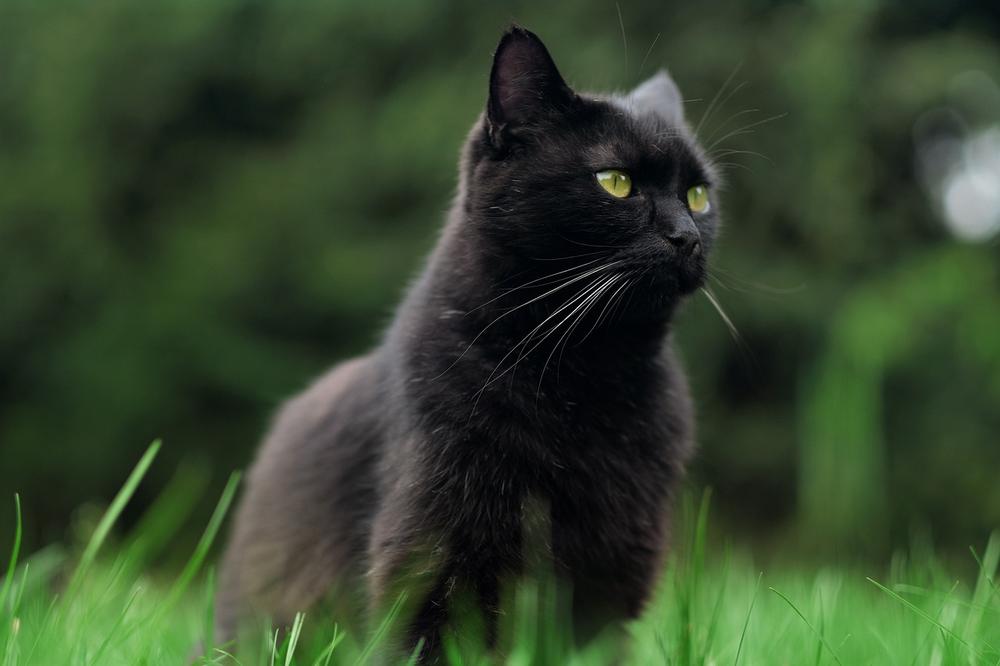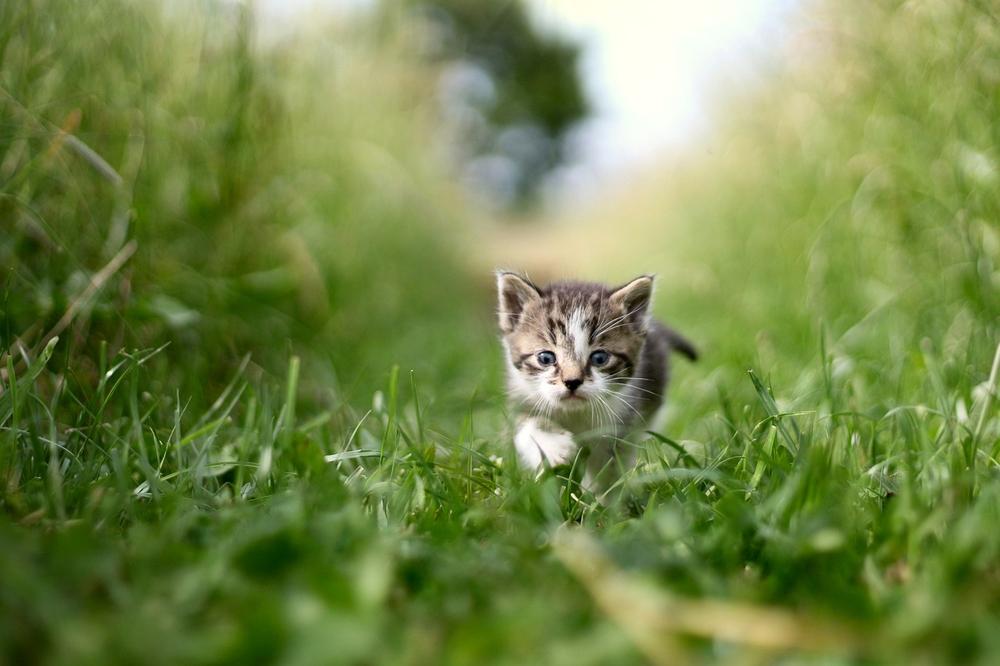How Hot Is TOO HOT for Cats? (Recommended Temperature)

Imagine this:
Your furry little friend, panting desperately, tongue hanging out, as the scorching heat bears down on them. 😓
It's a nightmare scenario for any concerned cat parent.
But worry not, fellow feline lover, because we're about to dive into the burning question:
How hot is too hot for cats?
Let's begin.
How Hot is Too Hot for Cats?
Cats may struggle in extreme heat, especially those with long fur or short snouts. To ensure their comfort, keep the temperature around 75 to 78 degrees Fahrenheit. Watch for signs of overheating, such as excessive panting and seeking cool surfaces. Provide water and access to cool spots.
Cats can struggle in extreme heat. Especially the ones with long fur or short snouts, like the ones with beautiful manes.
When it's hot out, they may have a tough time and will definitely appreciate being in an environment where the temperature is around 75 to 78 degrees Fahrenheit. Keep an eye out for signs that your cat might be feeling too hot - excessive panting, seeking out cool surfaces, searching for shade, and grooming excessively.
These clues are crucial...
But don't stress too much.
Cats have their limits, but they rarely get hurt by high temperatures.

It's not something you often witness in our feline pals.
I'm not suggesting you expose them to extreme conditions though.
Make sure they have plenty of water and access to cool spots during hot weather.
Just remember, cats come equipped with their own ways of handling the heat. 😺
Main points I'll expand upon further down this article:
- Cats have varying heat tolerance depending on breed, age, and health.
- Cats cannot tolerate temperatures above 104°F (40°C).
- High temperatures can cause discomfort and panting in cats.
- Kittens under eight weeks old may struggle to regulate their body temperature.
- Birman and Persian cats are more susceptible to heat due to their higher average body temperatures.
- Indoor cats should have a house temperature between 60 and 70°F.
- Exposing cats to temperatures over 105°F increases the risk of heatstroke.
- Heat-related diseases can be fatal for cats in as little as 15 minutes of extreme heat exposure.
- Immediate cooling measures should be taken if a cat is suspected of heatstroke.
- Cats should be provided with shade, cool water, and ventilation to keep them cool in hot weather.
But how hot is too hot for cats?
Let's dig deeper into the recommended temperature limits to ensure our furry friends stay safe and comfortable!
I'll provide you with all the essential information you need to know...
Recommended Temperature Limit for Cats
To keep your furry feline friend purring with contentment, you should know the recommended temperature limit for cats.
Why? Because overheating can lead to serious health risks for your beloved pet.
Now, when it comes to cats, their heat tolerance is influenced by various factors such as breed, age, health, and fur type.
For instance, cats with long hair or shorter snouts should stay indoors when the mercury rises above 75°F to 78°F (24°C to 26°C) if you want them feeling fine.
Maintaining these indoor temperatures assists them in dealing better with the scorching heat while reducing the risk of potential heat-related illnesses.
Although each cat has its own preferred climate, they all share an intolerable upper threshold.
Cats simply cannot handle temperatures surpassing 104°F (40°C).
Picture a feline lounging poolside in stifling heat. Trust me, it's no picnic for that furball.
In fact, high temperatures can bring discomfort, inducing panting, and potentially sparking health issues along the way.
But hold on, there are even more aspects to consider!
Those young kittens under eight weeks old might struggle regulating their body temperature during hot spells (bless their tiny paws).
Moreover, specific breeds like Birman and Persian cats face an elevated risk of heat troubles due to their naturally higher average body temperatures.
It's like they have their own built-in sweaters!
To ensure optimal well-being, a perfect cat's body temperature should range between 100 and 102.5 degrees Fahrenheit.
By adjusting your home environment accordingly, you're giving your adored kitty the cozy spot they deserve, especially if they're shorthaired and reside in chilly regions.
When it comes to outdoor adventures, cats tend to navigate temperatures ranging from 45°F to 90°F without breaking too much of a sweat.
However, for those indoor cats seeking sanctuary from the unpredictable weather outside, a cozy abode with interior temperatures between 60 and 70°F will provide them solace and peace of mind.
Remember to exercise caution with hot temperatures!
Anything above 105°F could spell real danger for your beloved pet.
This is particularly true for older cats, ones with luscious fur coats, or those managing pre-existing medical conditions.
Heat-related diseases can be deadly, causing severe harm in as little as 15 to 30 minutes of exposure to extreme heat.
It's a race against the clock when it comes to their well-being.
So here's the scoop:
You need to keep environments under 80 degrees, ensure proper ventilation, and always remain aware of the temperature around your furry friend.
The stakes are high, but by staying vigilant, you're giving your cat the best chance at leading a cool, comfortable, and safe life.
...So, while you're keeping an eye on the temperature limits for your furry friend, you might be curious about another feline quirk.
If you've ever wondered why cats' noses get wet when they purr, I've got you covered.
Want to know more? Check out my article on Why Do Cats Noses Get Wet When They Purr.
It's the purrfect guide to understanding this delightful mystery.
Stay informed and keep those adorable whiskers dry!
Signs of Heatstroke in Cats
Recognizing the signs of heatstroke in cats
You love your cat, don't you?
And you want to ensure they stay safe in this hot weather.
So, let me tell you about the common symptoms to watch out for.
Acting quickly is crucial when you spot these symptoms
First things first – if your furry friend starts panting excessively, it's not a good sign.
Cats usually don't do that, so it could mean something is wrong. You should also be concerned if they vomit or have dark red gums.
When you see any of these signs, it's time to act immediately and get help!
Cooling measures are vital to prevent complications
Time is of the essence when it comes to heatstroke. A cat's body temperature can jump above 104°F (40°C), which can cause their organs to shut down. So, you should act fast and cool them down right away.
Get some lukewarm water and wet their fur.

Set up a fan nearby, and make sure they have access to fresh, cold water.
These measures will help bring their temperature back to normal.
But wait, there's more...
Keep an eye out for other symptoms like rapid breathing, clumsiness, loss of appetite, and decreased activity level.
If their temperature reaches 105°F or higher, waste no time – seek immediate veterinary help. This ensures we prevent any organ damage and keep our beloved feline happy and healthy.
But what about the optimal temperature for cats?
Are you curious to find out how you can create a cool and comfortable environment for your feline friend?
Let's explore the recommended temperature limits and effective cooling strategies in the next section...
Tips for Keeping Cats Cool in Hot Weather
To keep your cat cool in hot weather, follow these simple and practical tips:
- Make sure you have plenty of shaded spots for your cat to escape the scorching sun.
- Create a cool haven by providing shade, cool water, and good ventilation.
- If your cat is older, overweight, or has health issues, it's best to keep them indoors with the AC on and set the thermostat between 78-80°F.
- Help your cat beat the heat by encouraging changes in blood flow, finding cool surfaces, staying away from direct sunlight, and seeking out breezy areas.
- For outdoor cats, provide access to shady places and always ensure they have clean and fresh water available.
- Consider getting a cat water fountain to encourage hydration and help keep your furry friend cool.
- Keep an eye on humidity levels indoors as this can affect your cat's cooling abilities and dehydration risks.
- Trim your cat's nails regularly to help them dissipate heat more efficiently and give them some extra relief.
- Invest in cooling mats specially designed for cats, offering them a comfortable spot to rest and relax.
- Treat your cat with frozen goodies and make sure there's always enough fresh water around to keep them hydrated.
By adhering to these recommendations, you'll reduce the effects of heat stress and ensure that your adored feline friend remains comfortable and happy in scorching weather. ✨
Note: If you've ever wondered why your cat's nose feels cold, you'll want to check out Why Is My Cats Nose Cold. It's a valuable resource that answers all your questions about this common cat behavior. Discover the reasons behind your cat's chilly nose and put your worries to rest.

But what happens if the recommended temperature limit is exceeded?
What are the dangers that our precious feline companions can face?
Let's dive into the crucial steps to prevent heat-related emergencies for our cats and ensure their well-being in scorching weather...
Preventing Heatstroke in Cats
Preventing heatstroke in cats is crucial.
Here are some practical tips to keep your furry friend cool:
- Provide ample water for your cat to stay hydrated. A steady supply of fresh, clean water will help regulate body temperature.
- Create shady areas indoors and outdoors where your cat can take refuge from direct sunlight. This could be by placing a bed or creating a cozy corner near a window.
- Use fans or air conditioning to circulate air and maintain a comfortable temperature. Cats enjoy cooler spaces just like humans do!
- Avoid hot surfaces such as metal or concrete, which can quickly absorb and radiate heat. Your cat's sensitive paws may be at risk of burns.
- Never leave your cat alone in a car, even if the window is cracked. Cars can heat up dangerously fast and pose serious risks to your pet's health.
- Be mindful of exercise times during hot weather. Early morning or evening walks allow your cat to burn energy without overheating.
- Keep an eye out for warning signs of heatstroke, such as excessive panting, drooling, vomiting, or lethargy. If you suspect heatstroke, seek veterinary attention immediately.
Minimize the risk of heatstroke and guarantee your cat's safety and comfort during the summer months by following these precautions.
And that wraps up today's article.
If you wish to read more of my useful articles, I recommend you check out some of these: How Long Can a Cat Survive Locked in a Shed, Is Your Black Cat Getting White Hairs, Do Cats Drink Less Water in the Winter, How Long Can a Cat Go Without Water, and Why Wont My Cat Drink Water From Her Bowl
Talk soon,
-Sarah Davis